VERY RARE! 1969 Vietnam War U.S. Army Corps of Engineers - Military Construction Division "TROOP BASE CAMP" Theater of Operations Blueprint #2 (Double-Sided)
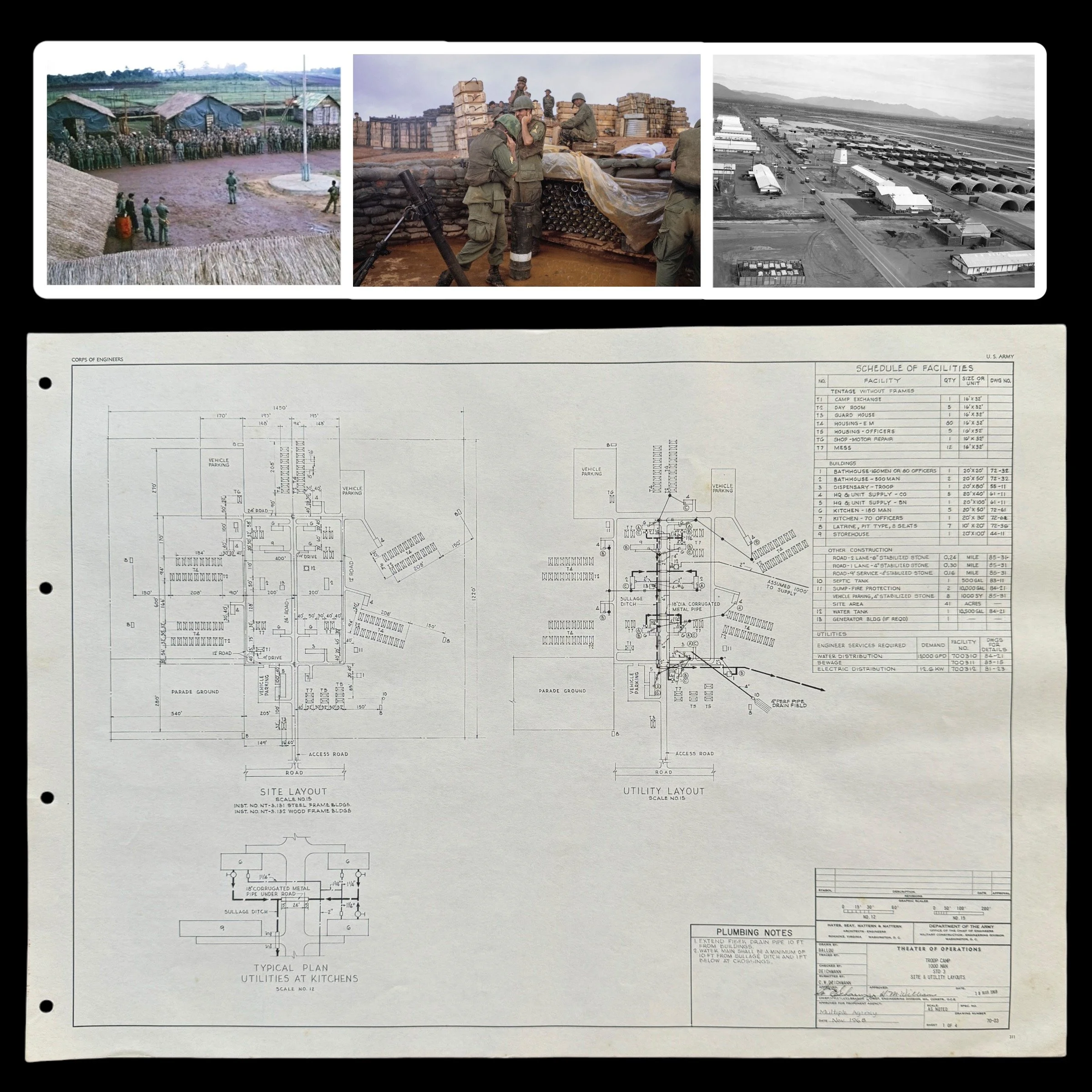
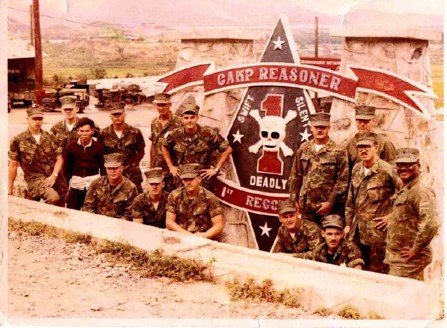


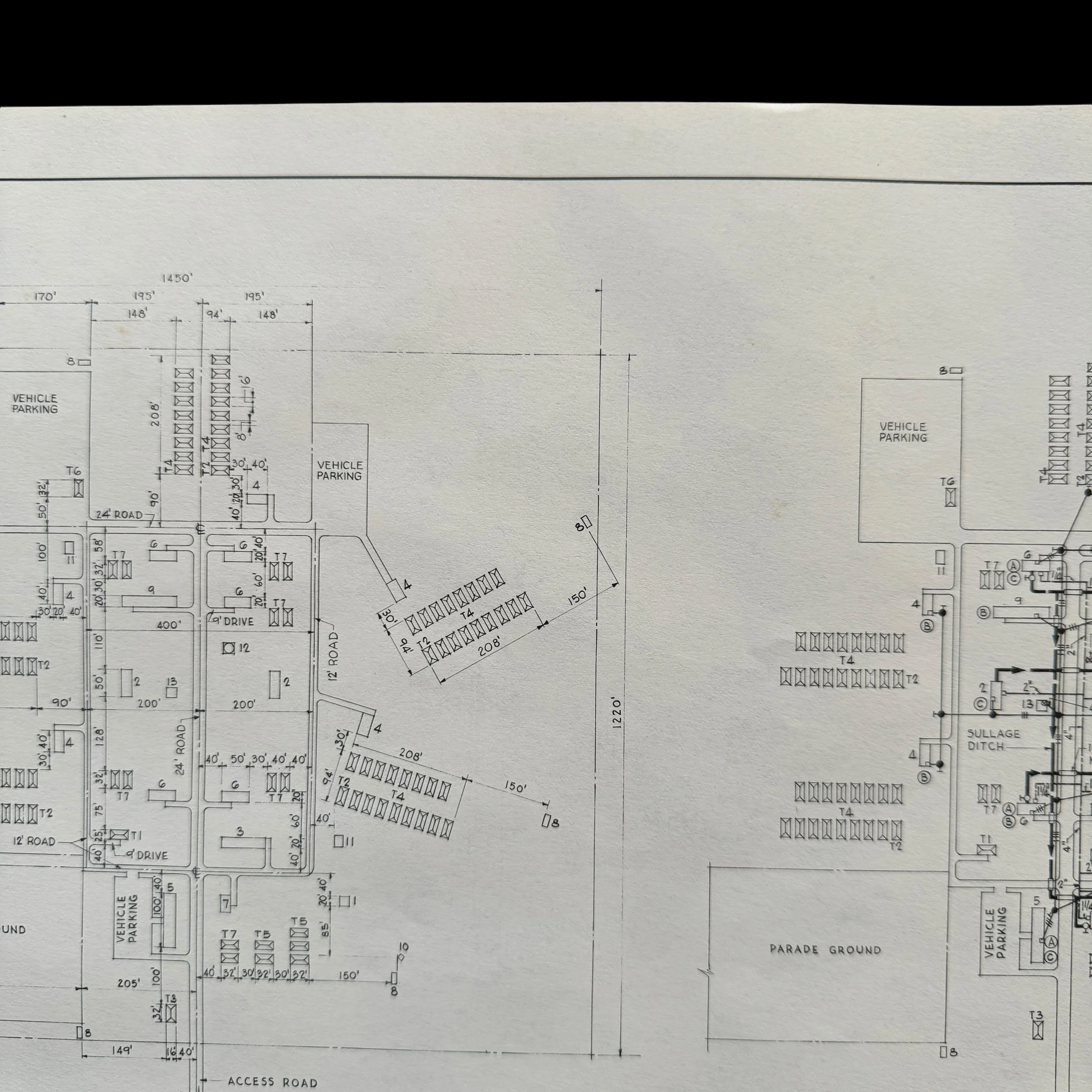
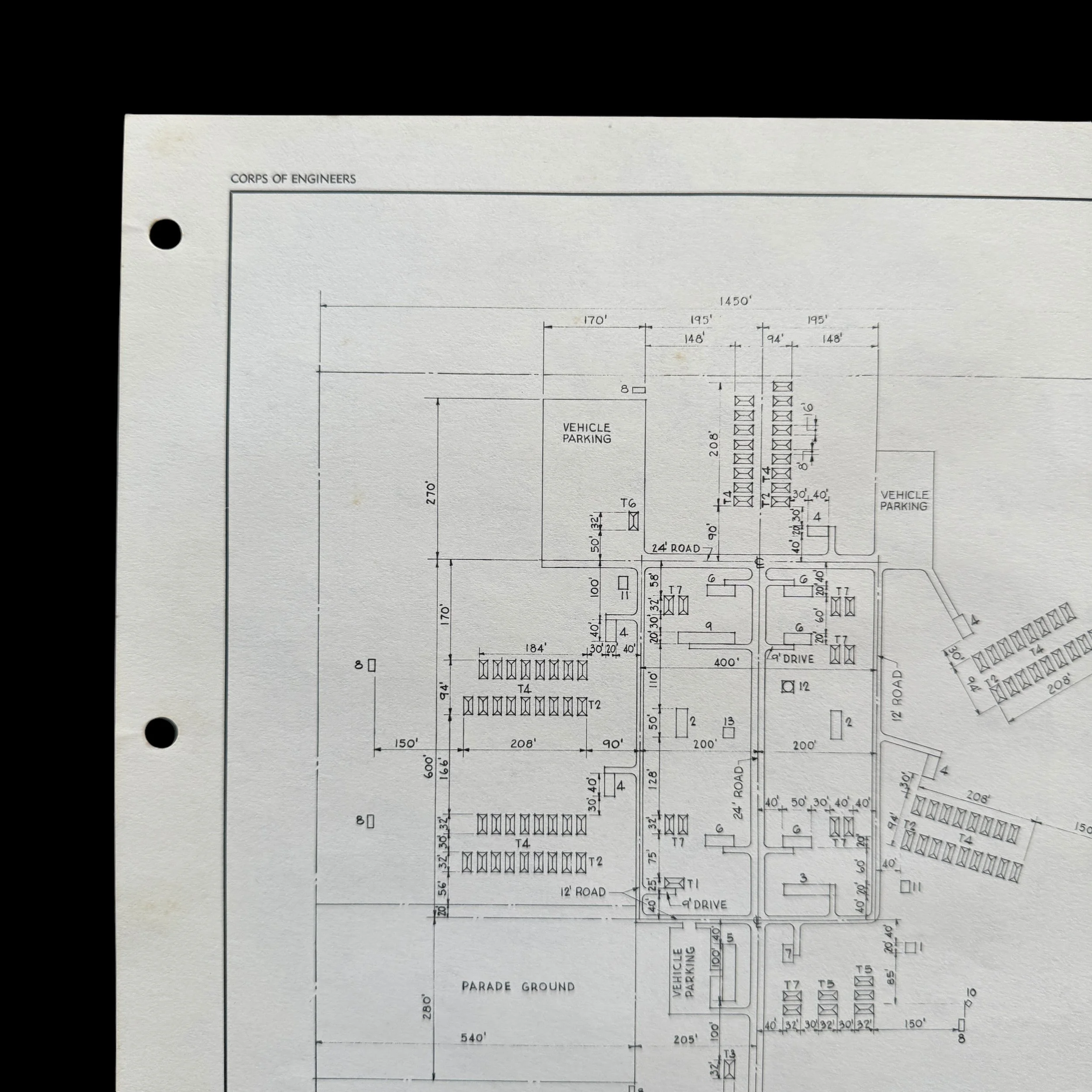
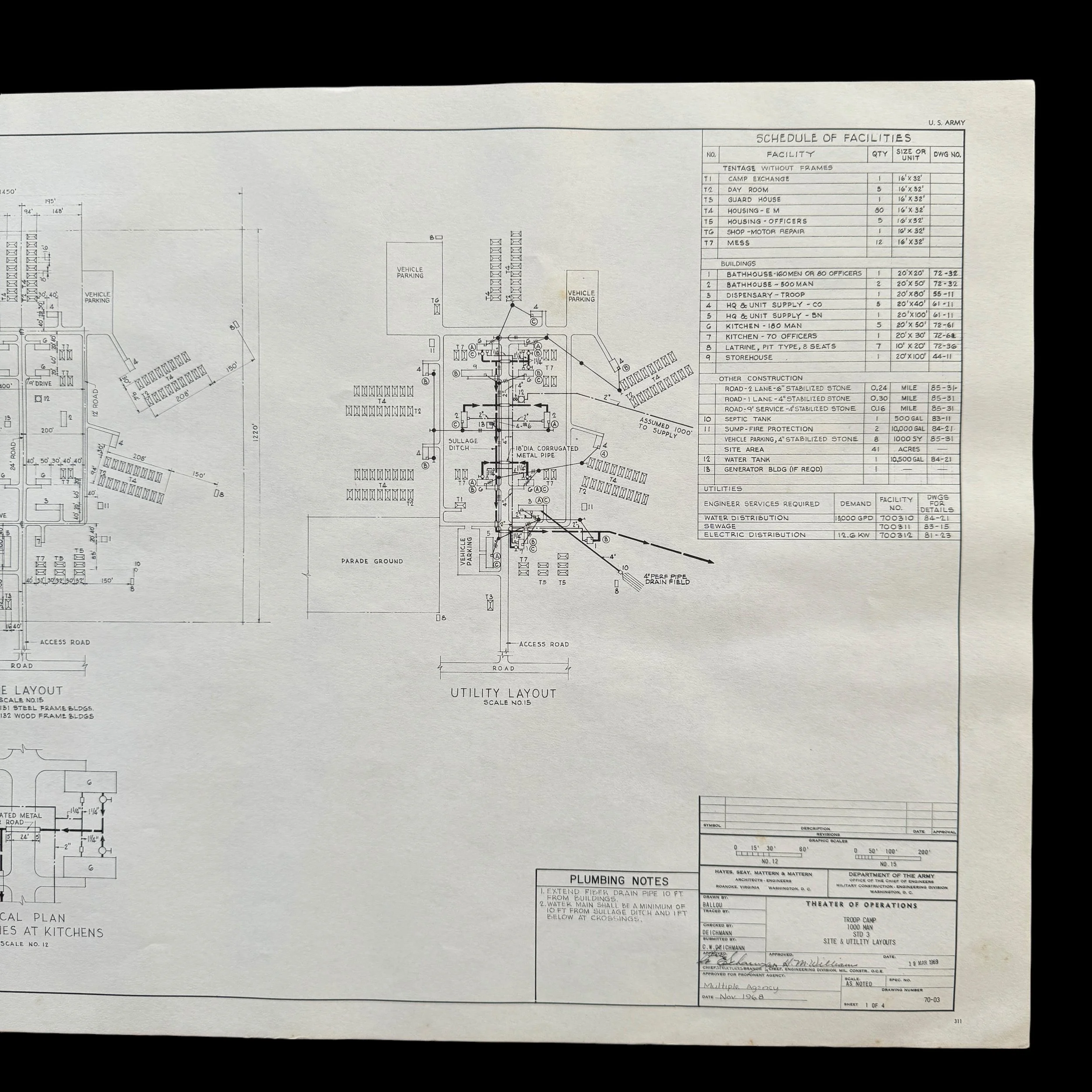
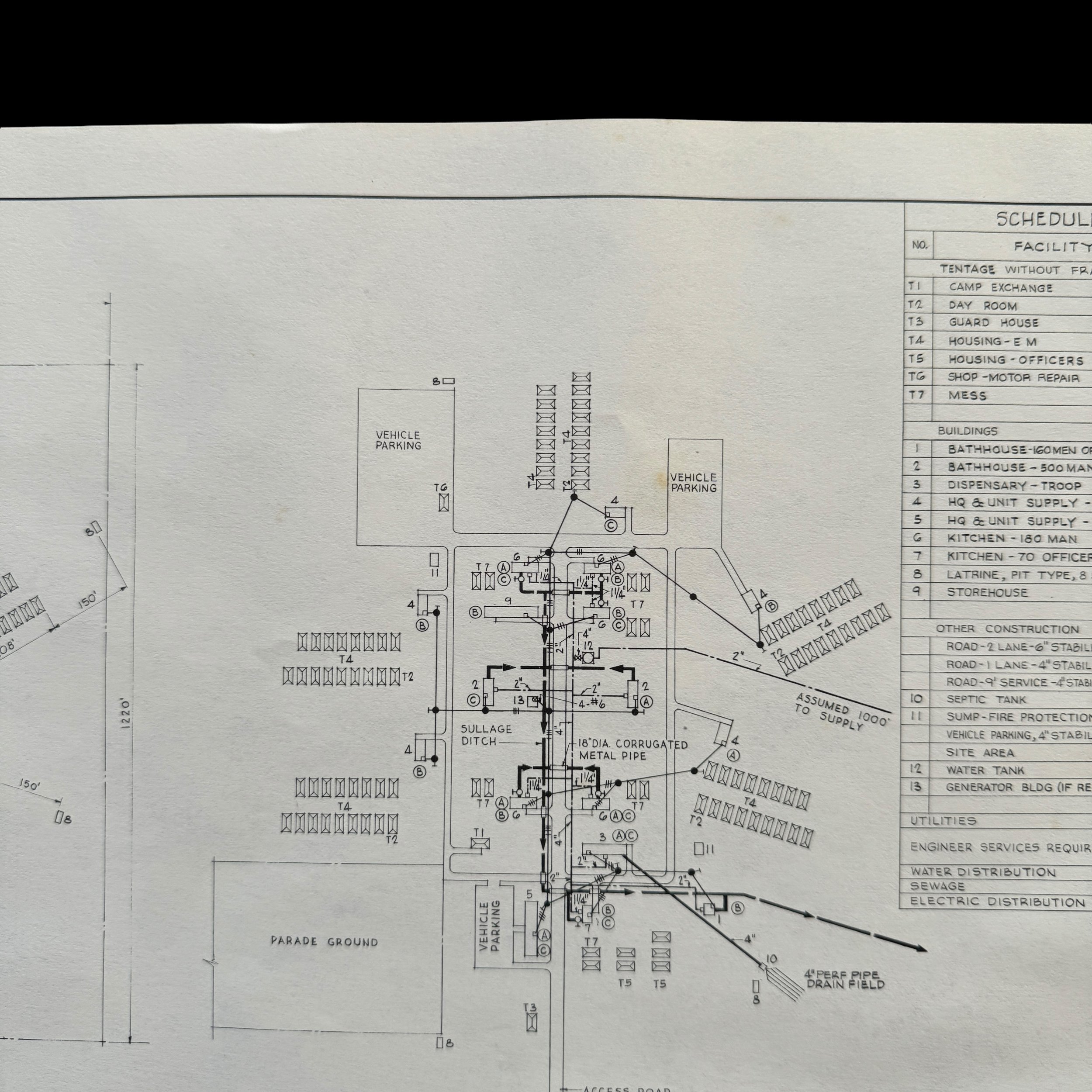
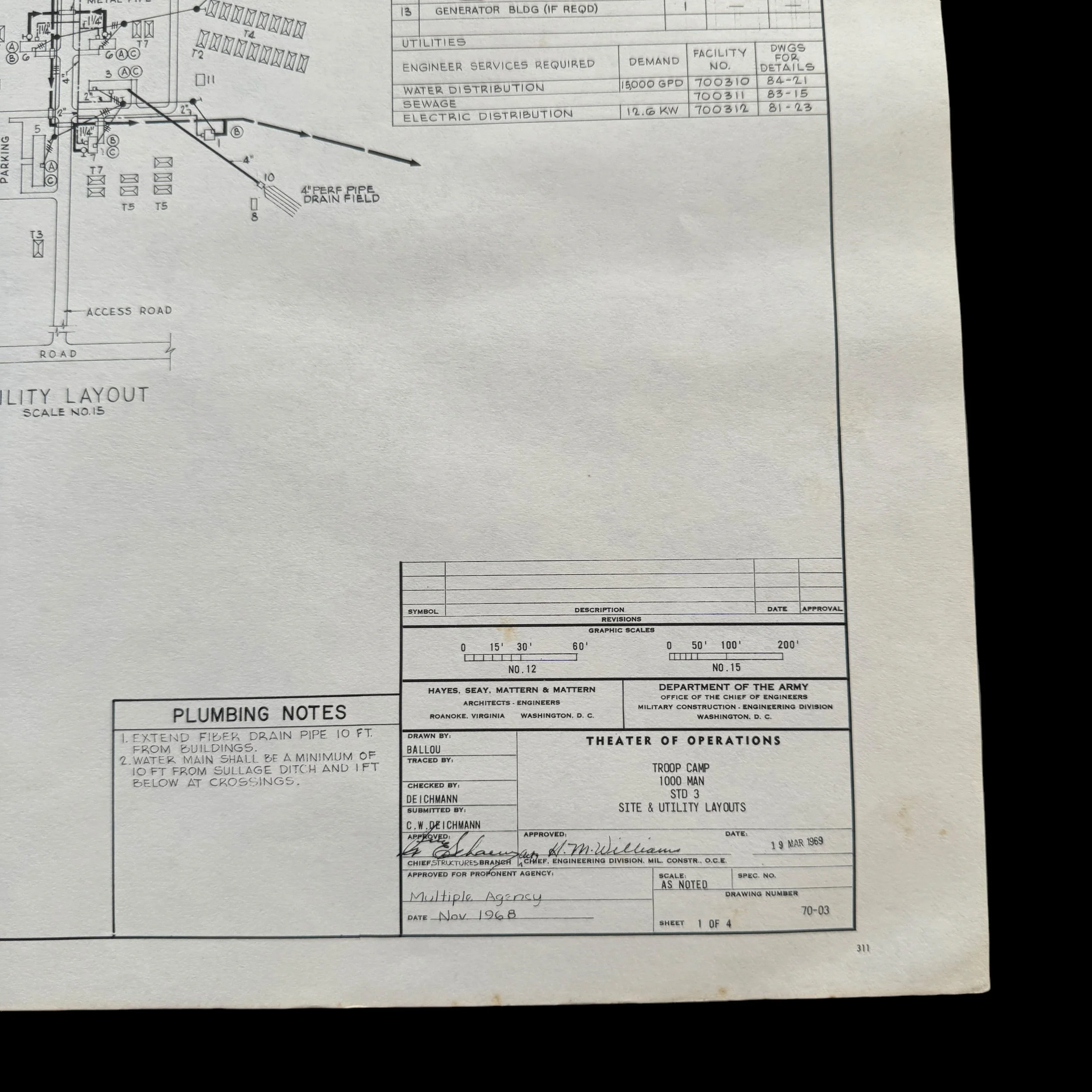
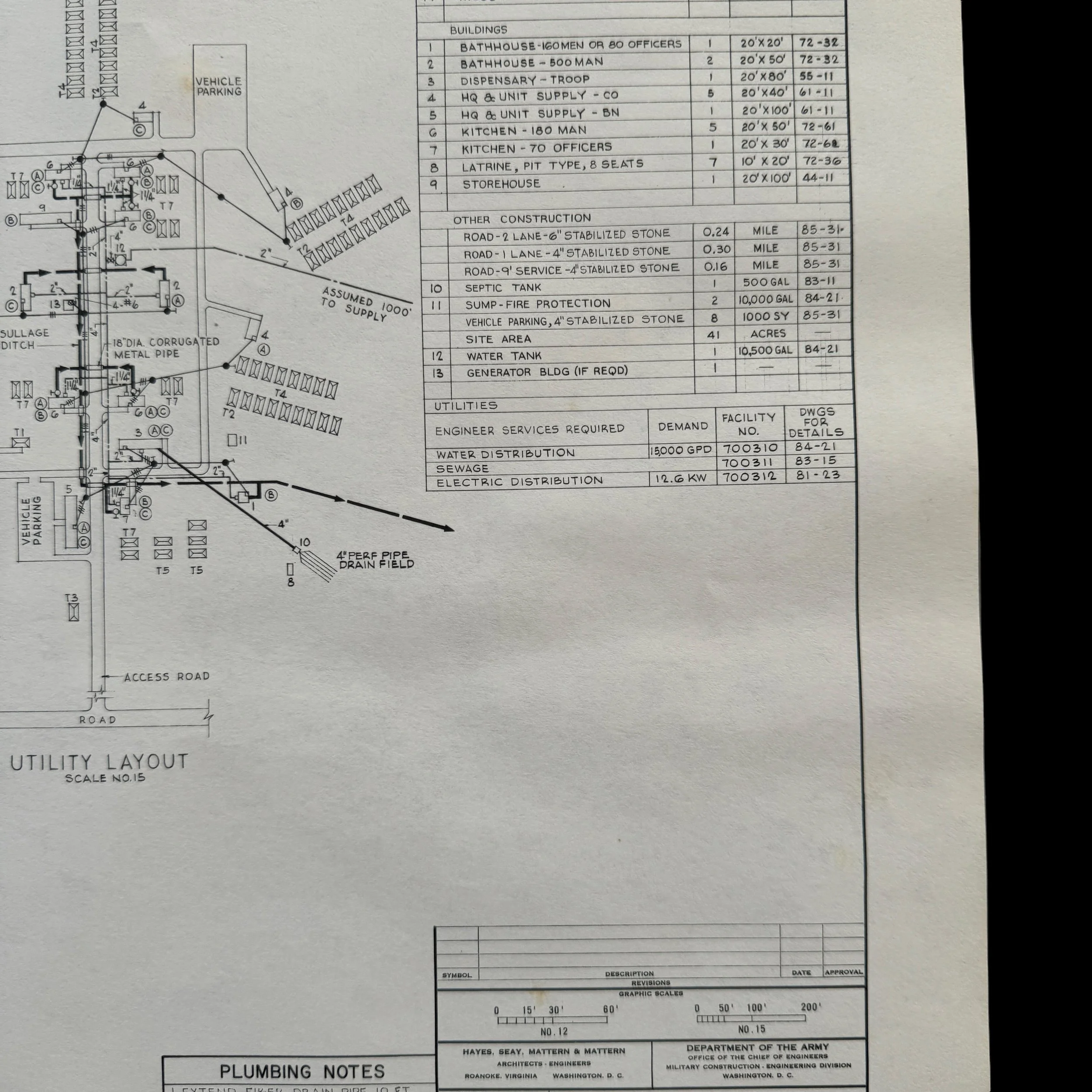
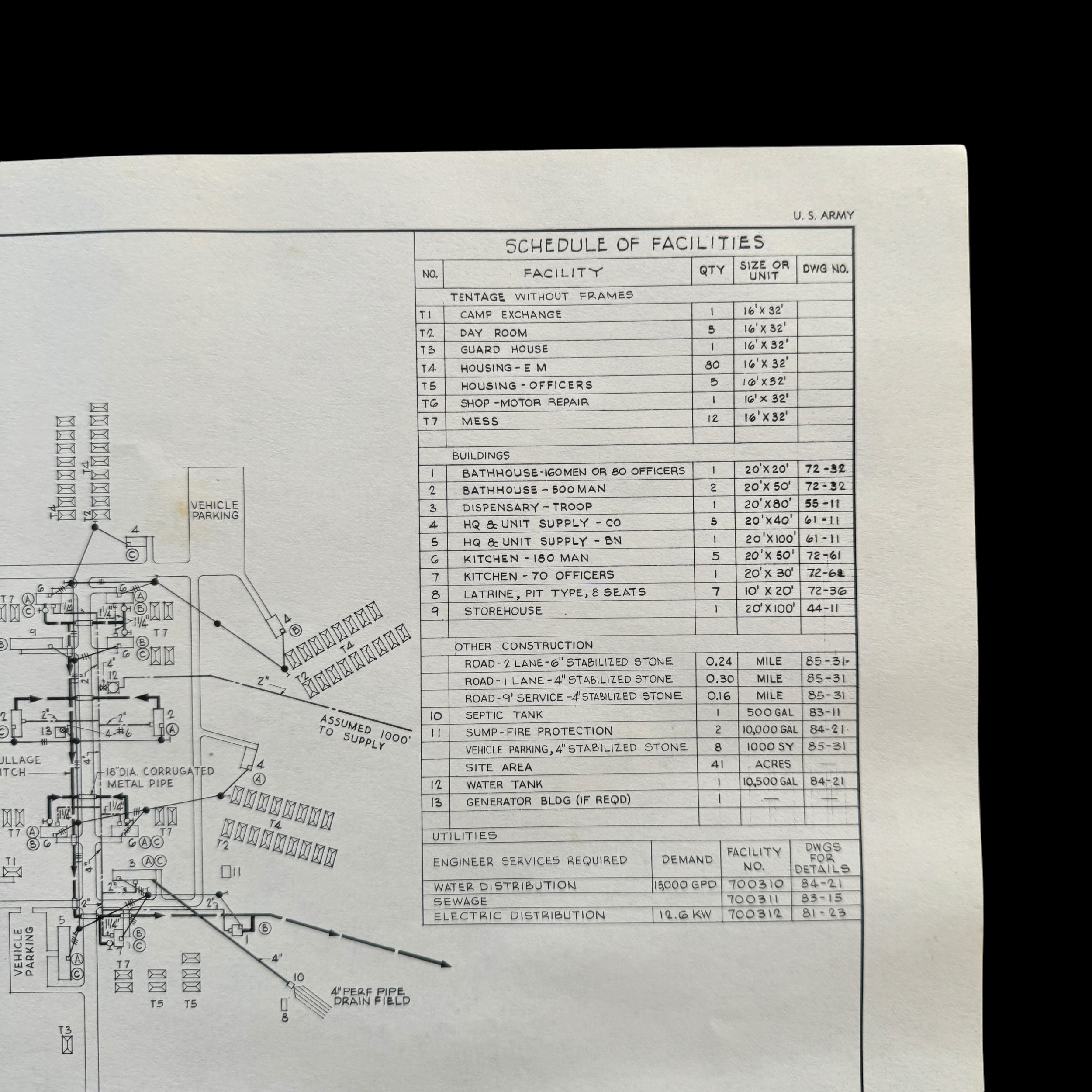
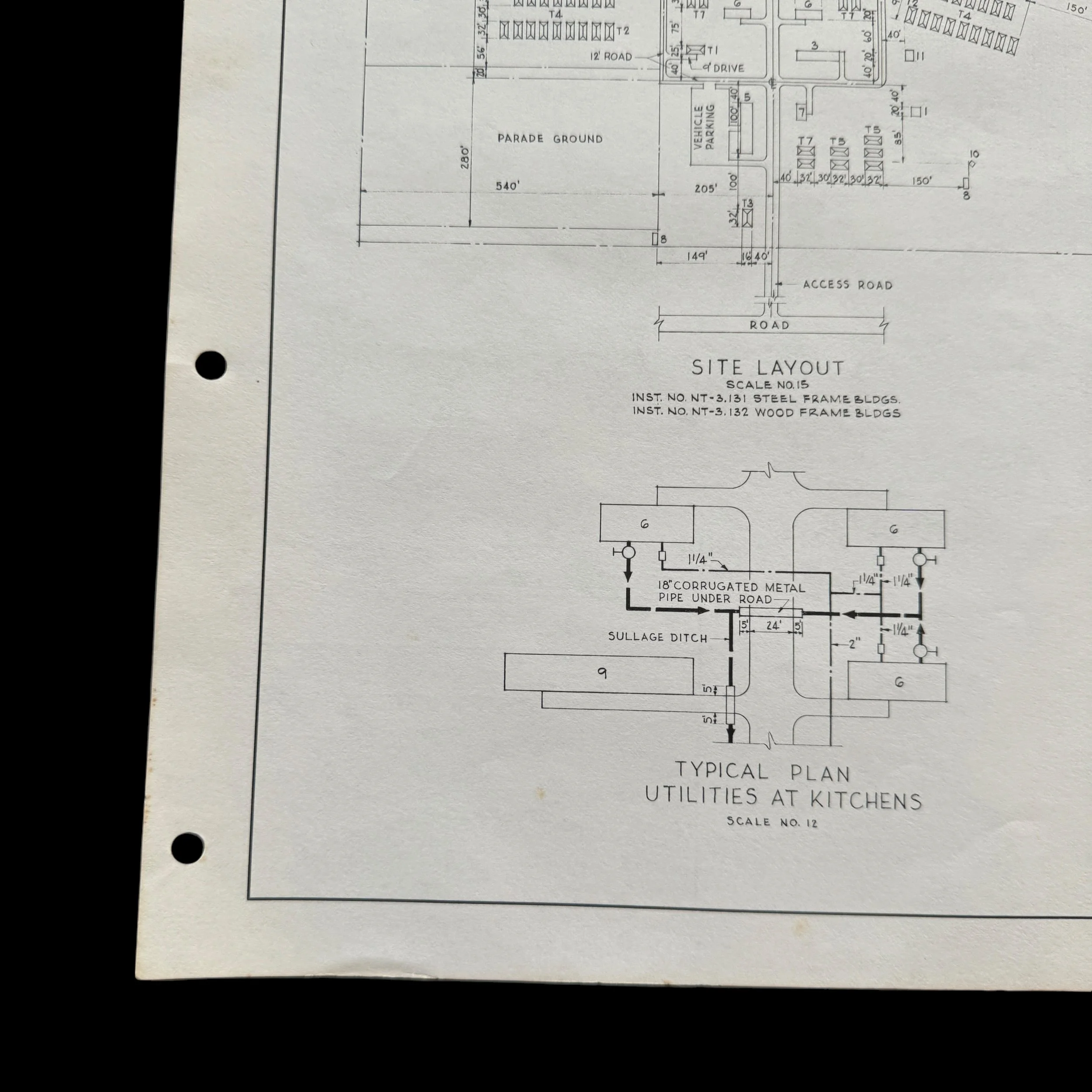
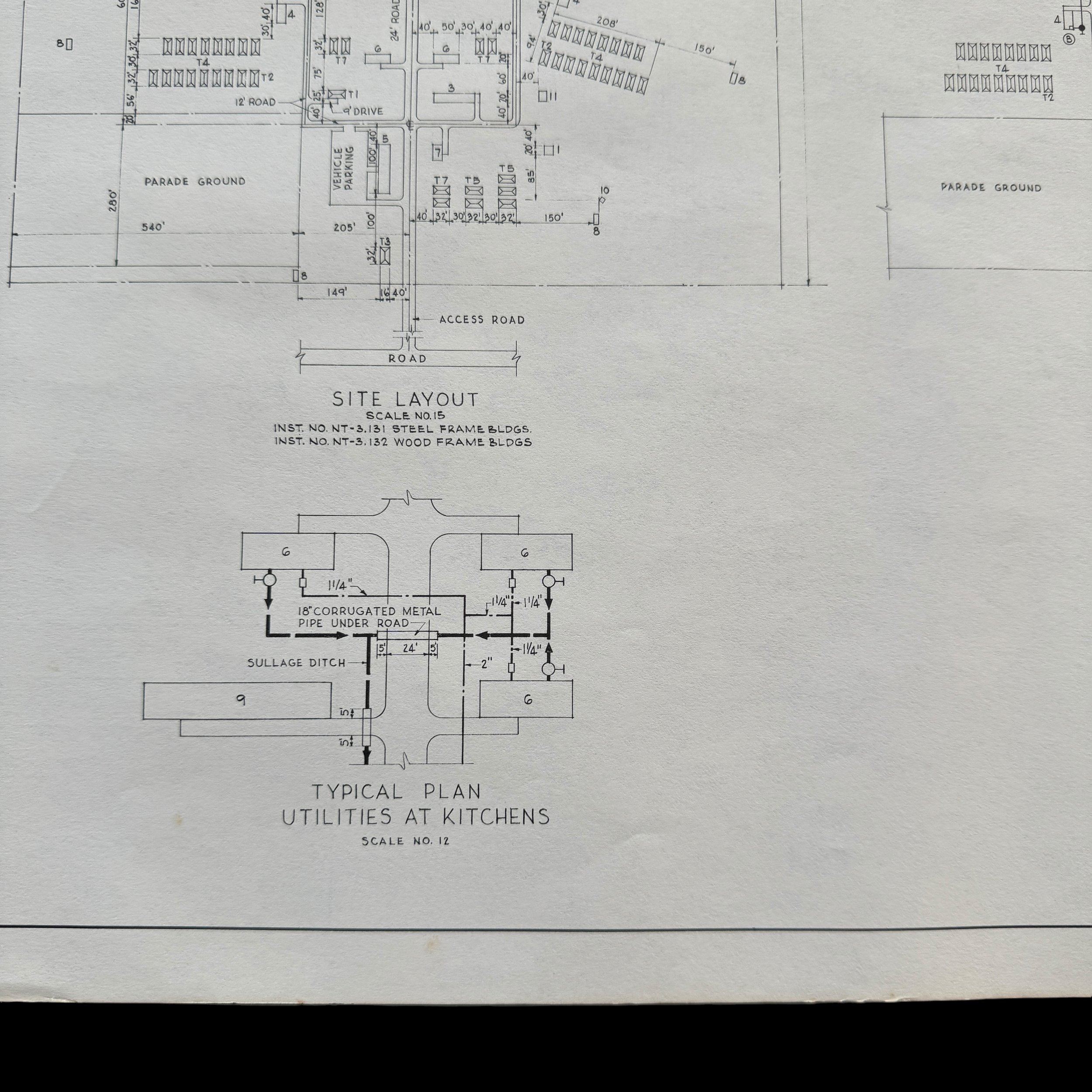
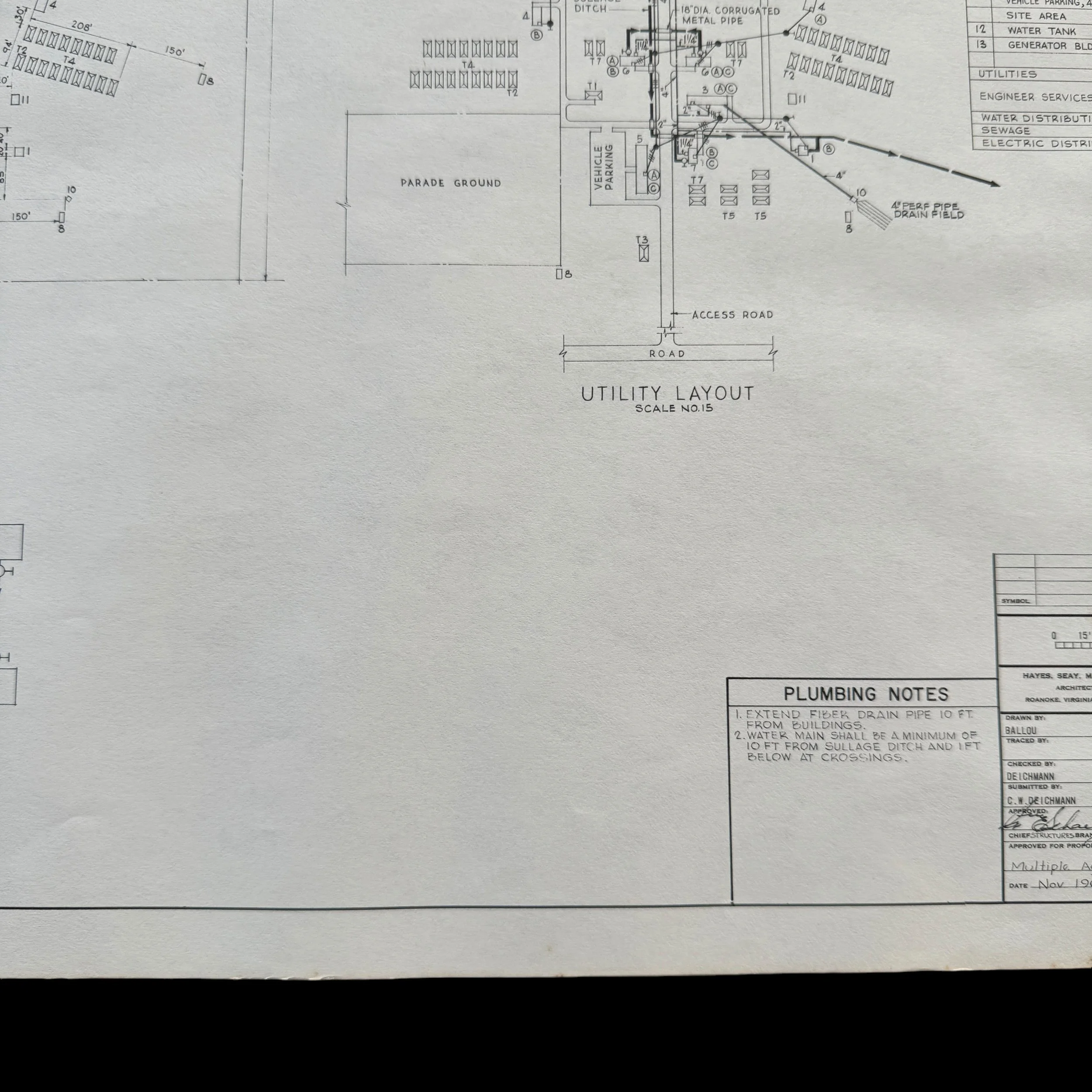
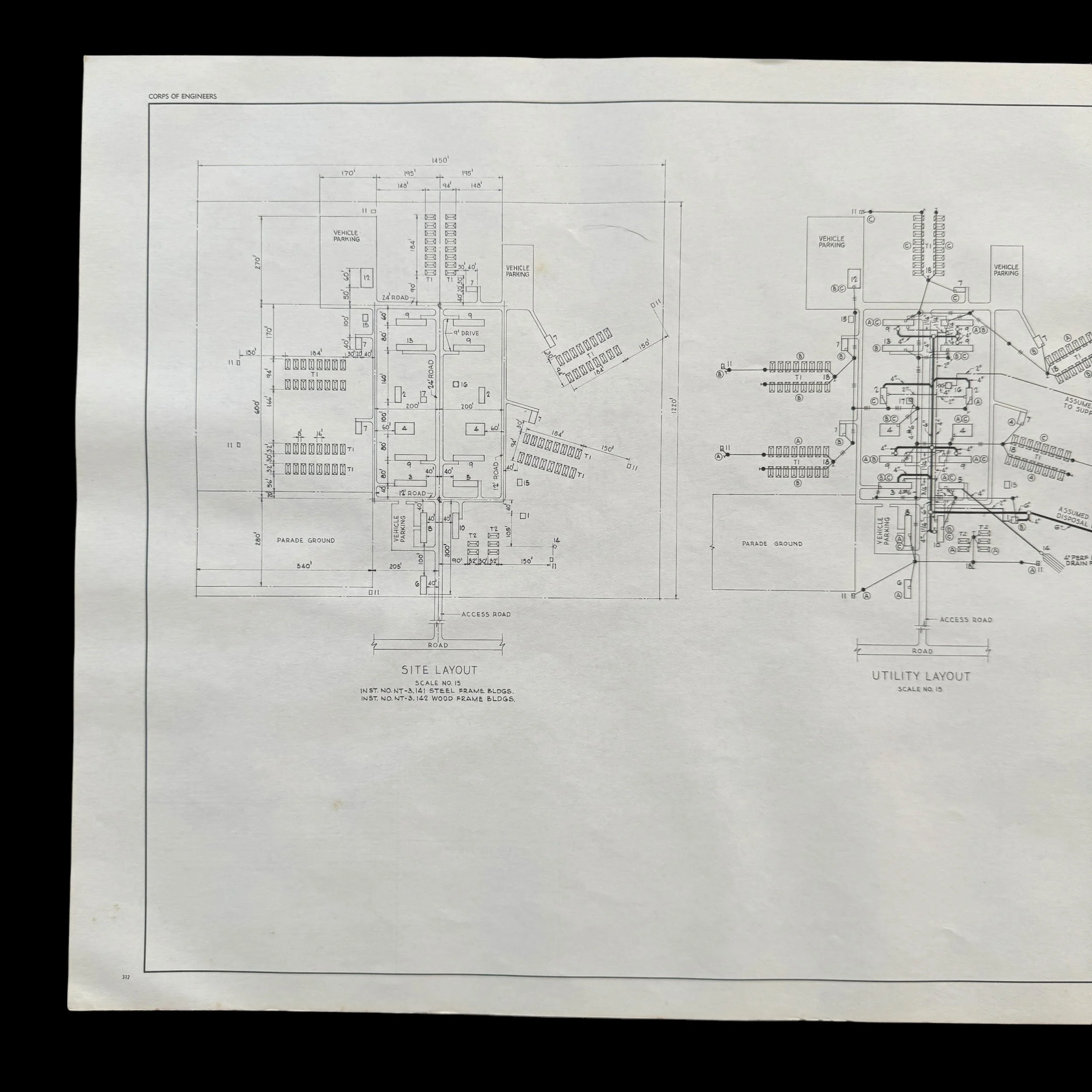
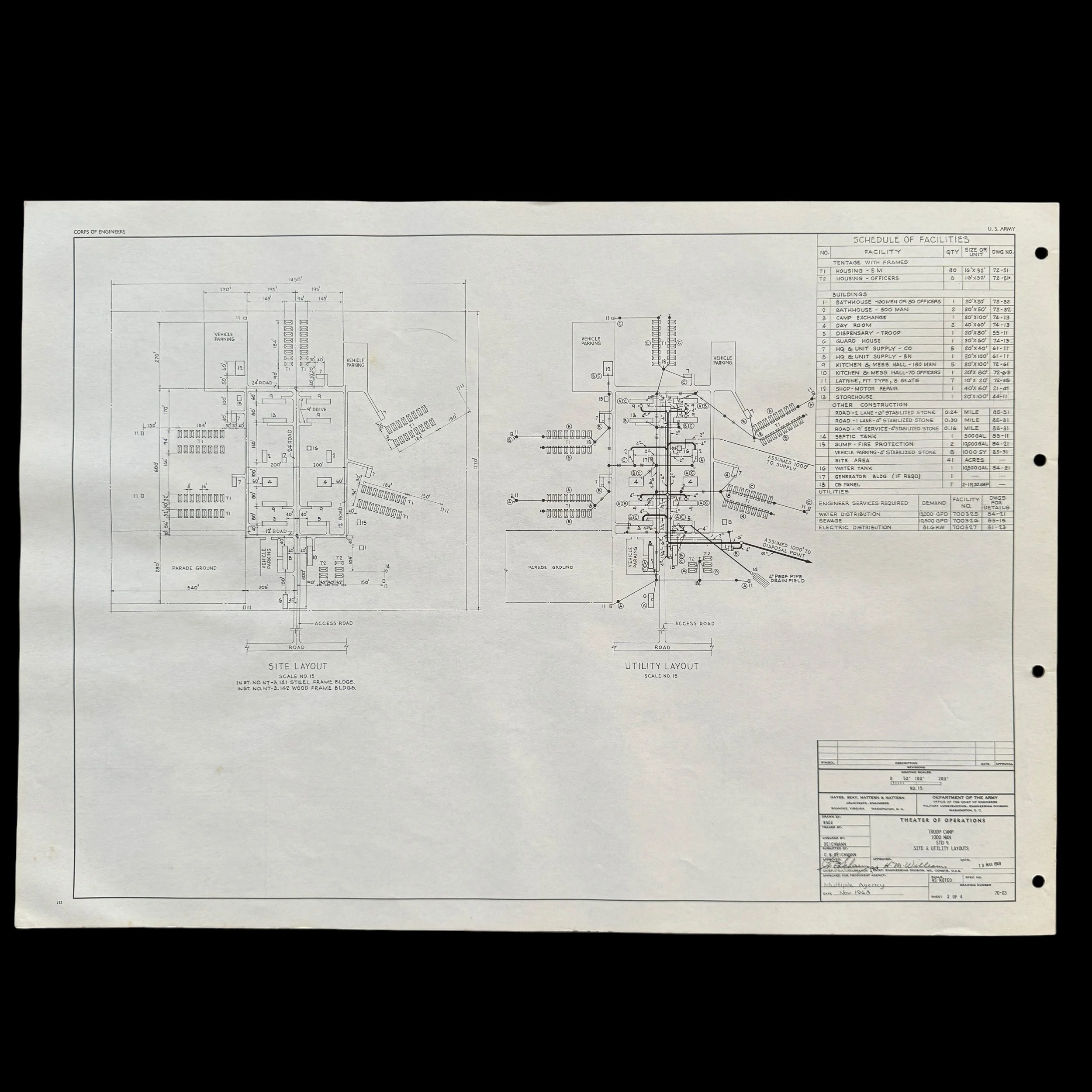
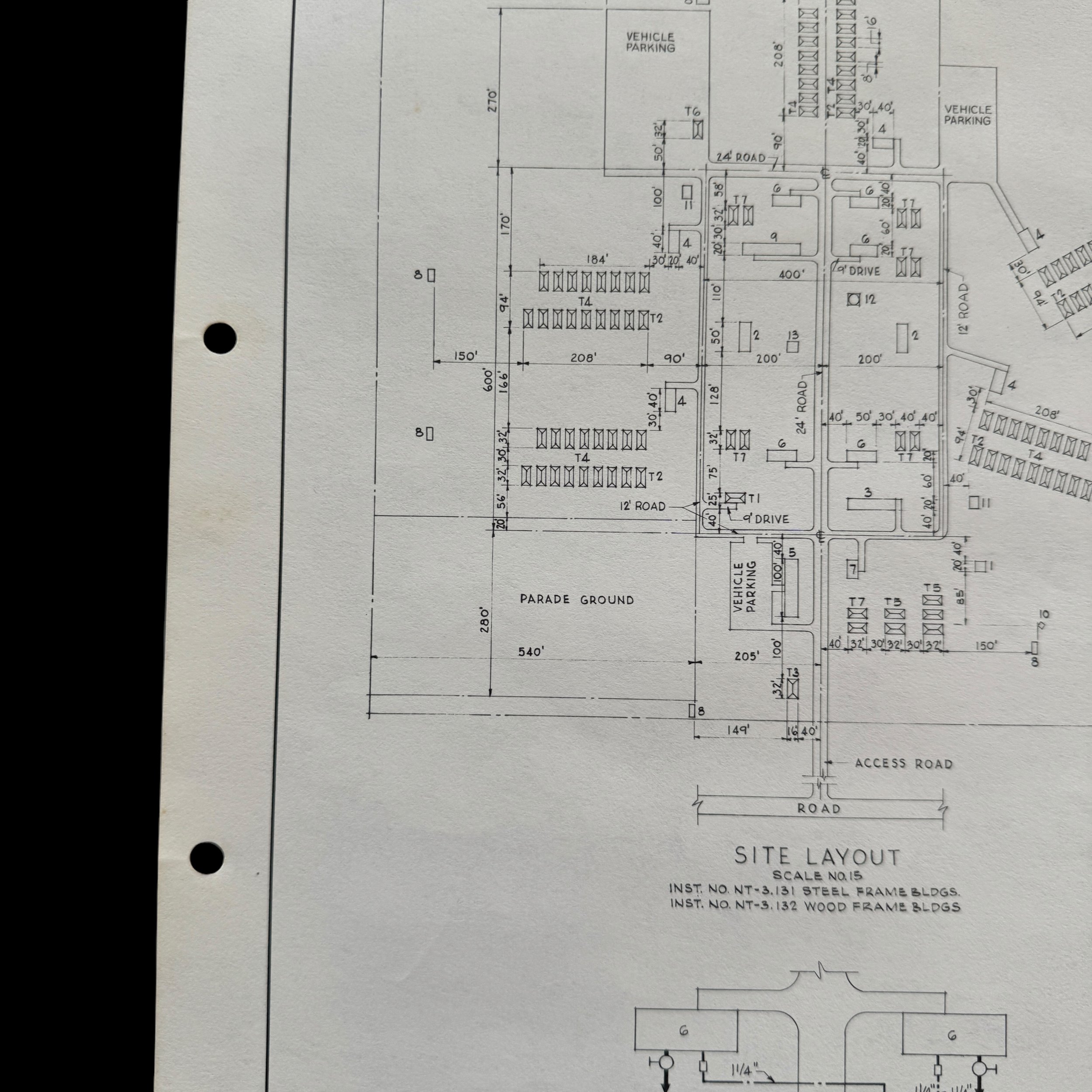
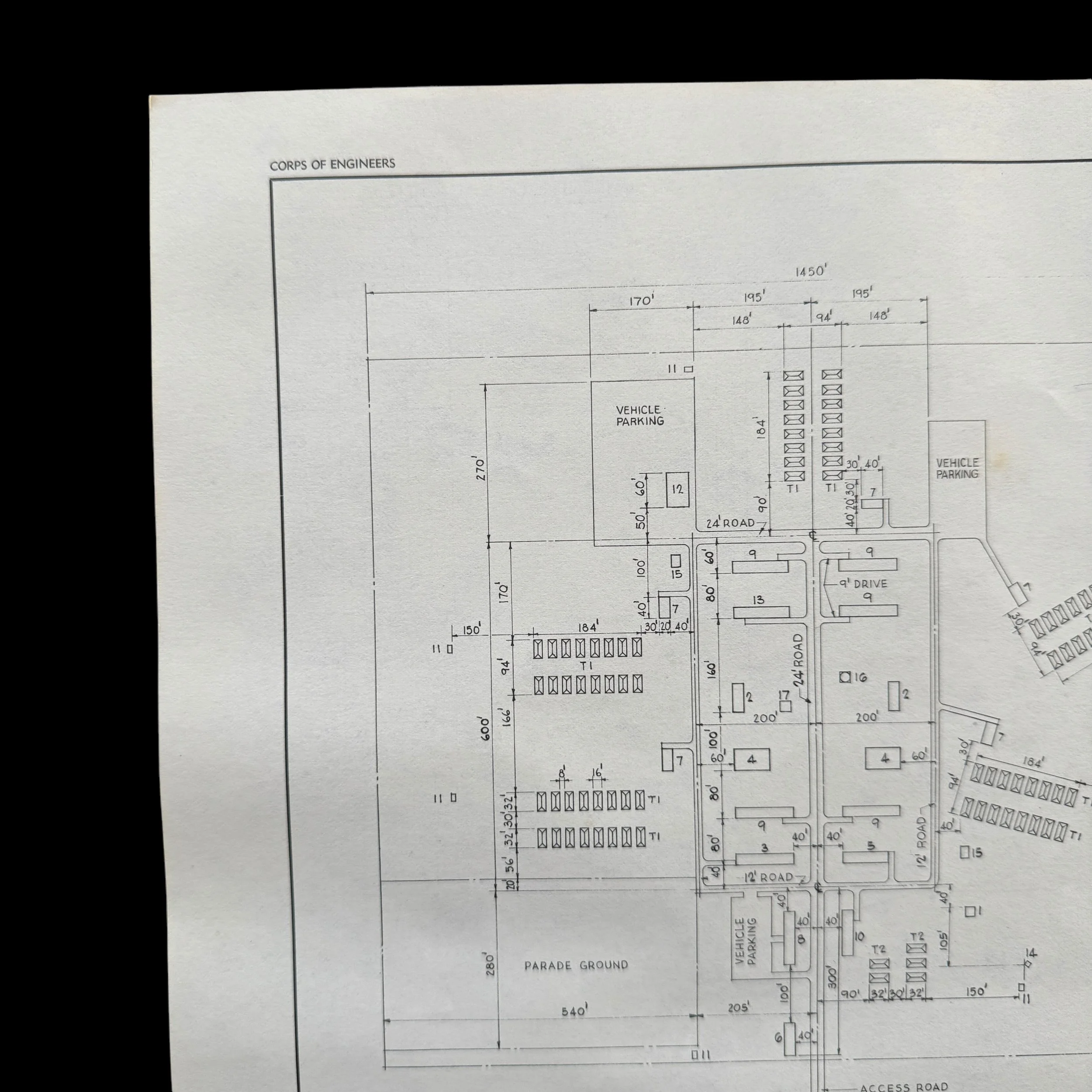
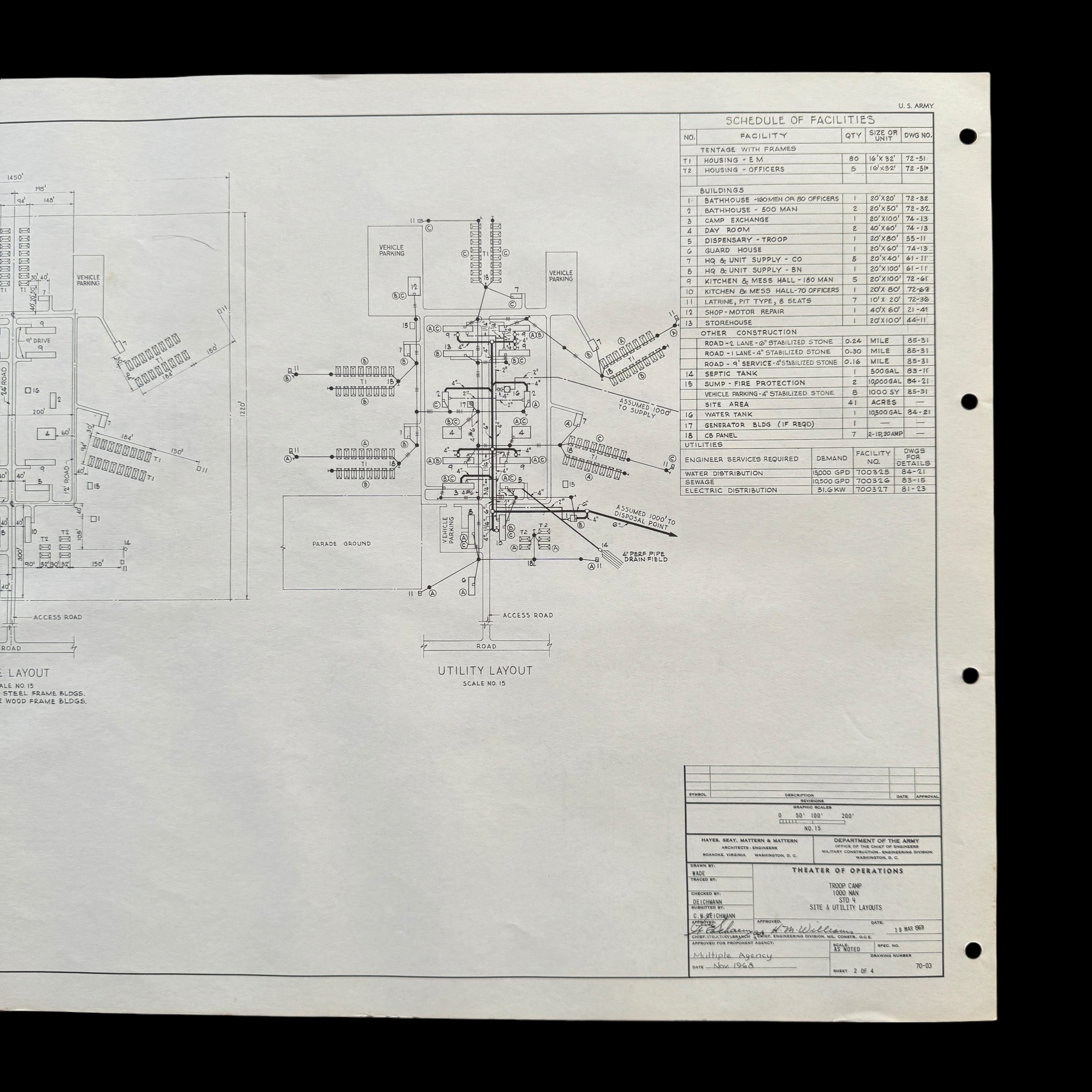
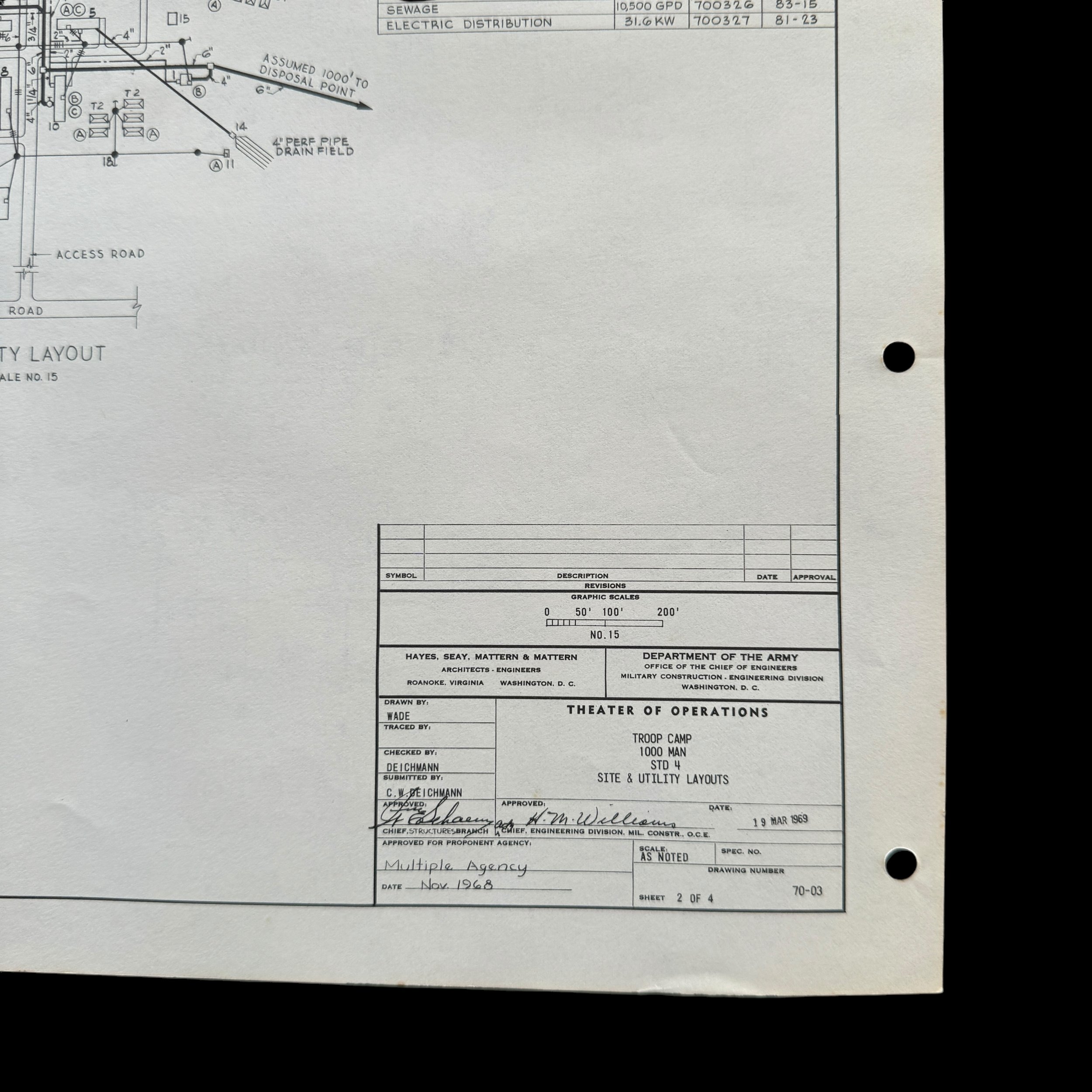
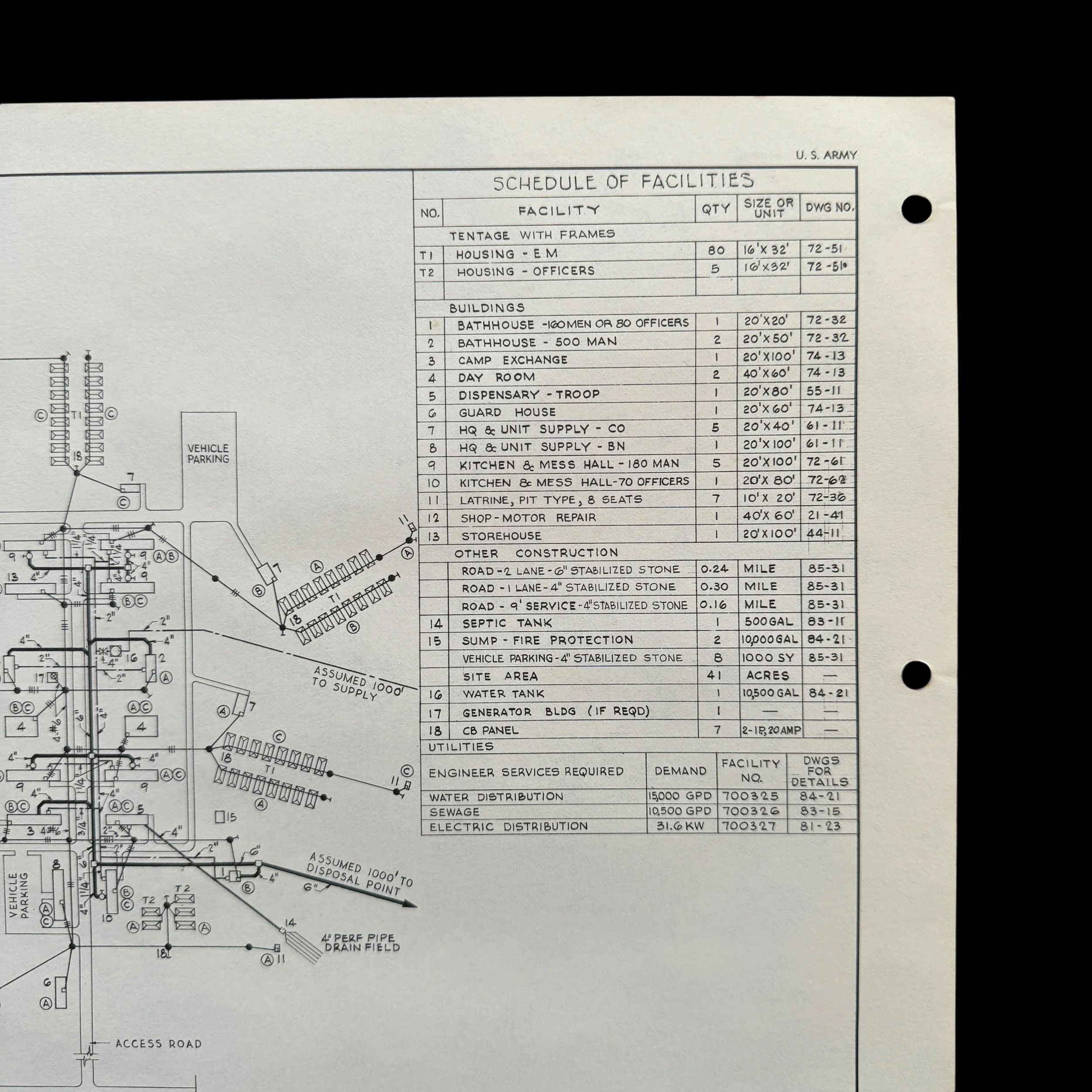
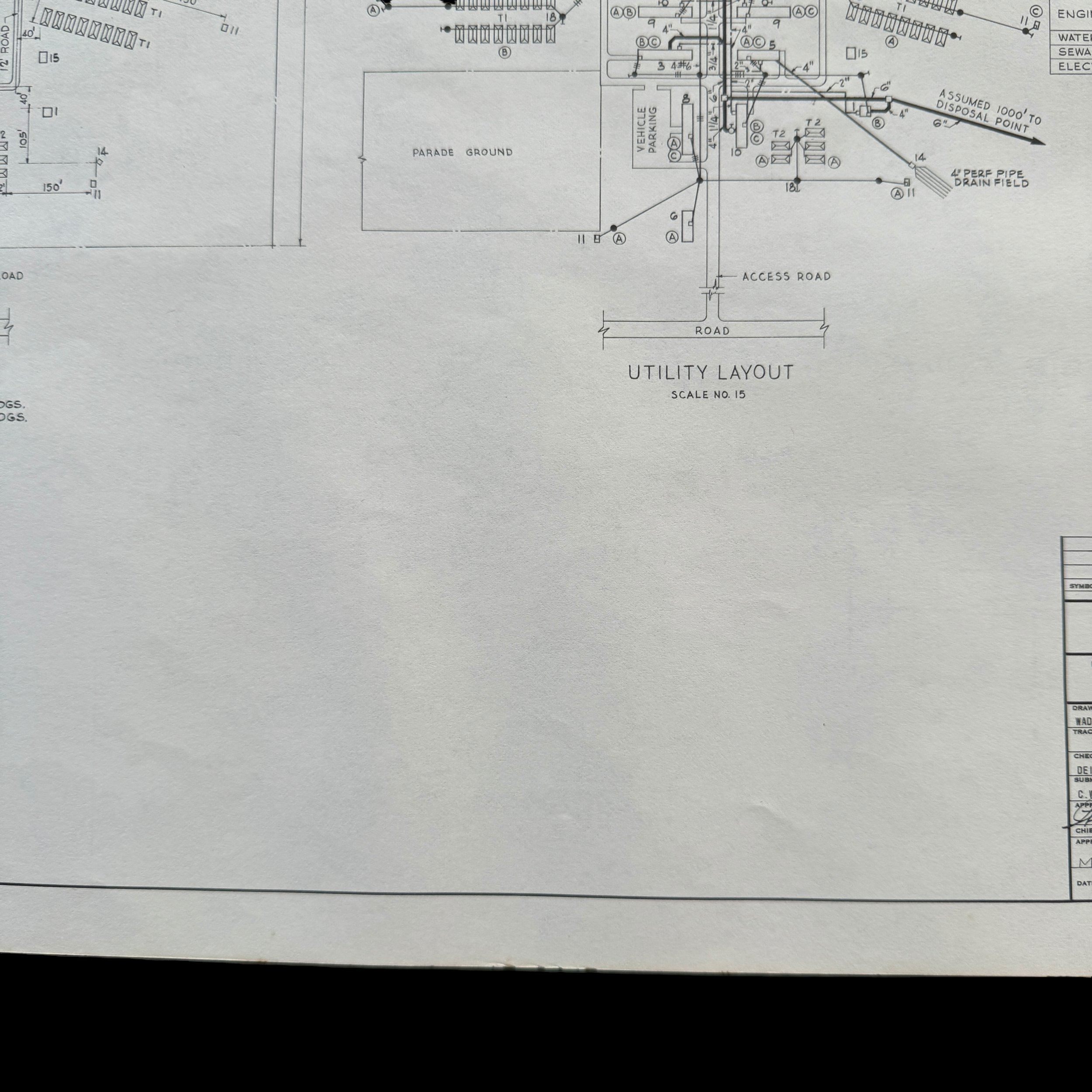
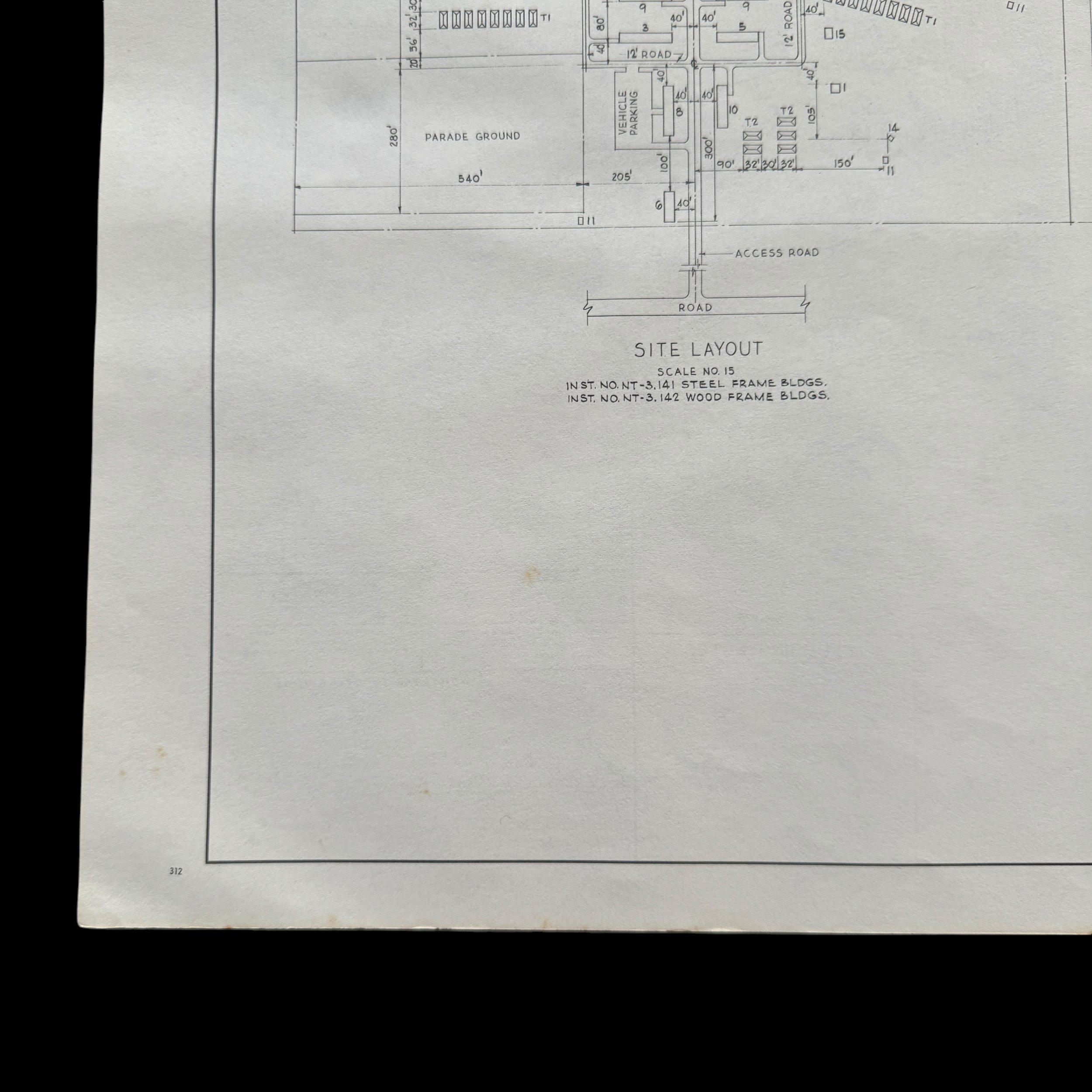




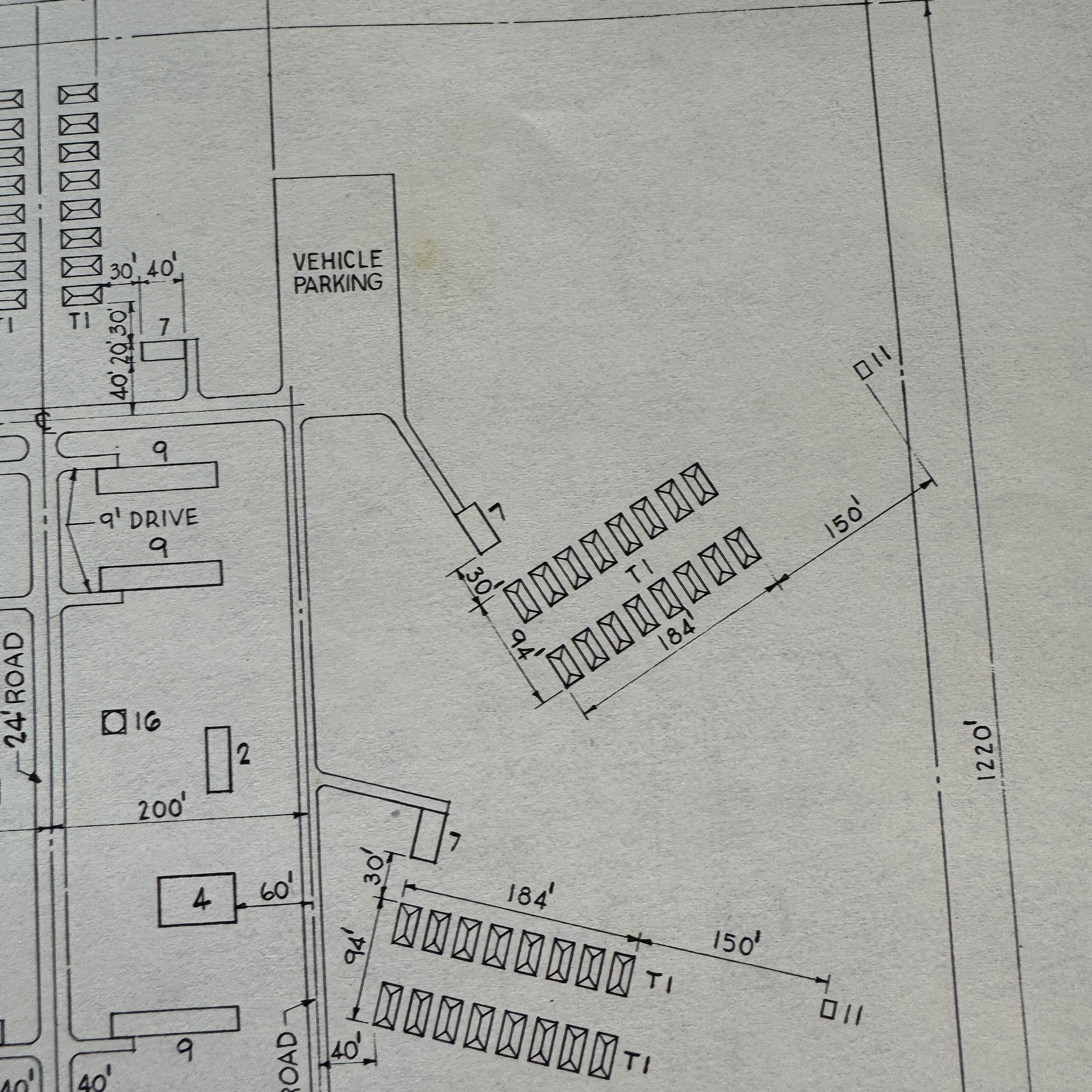
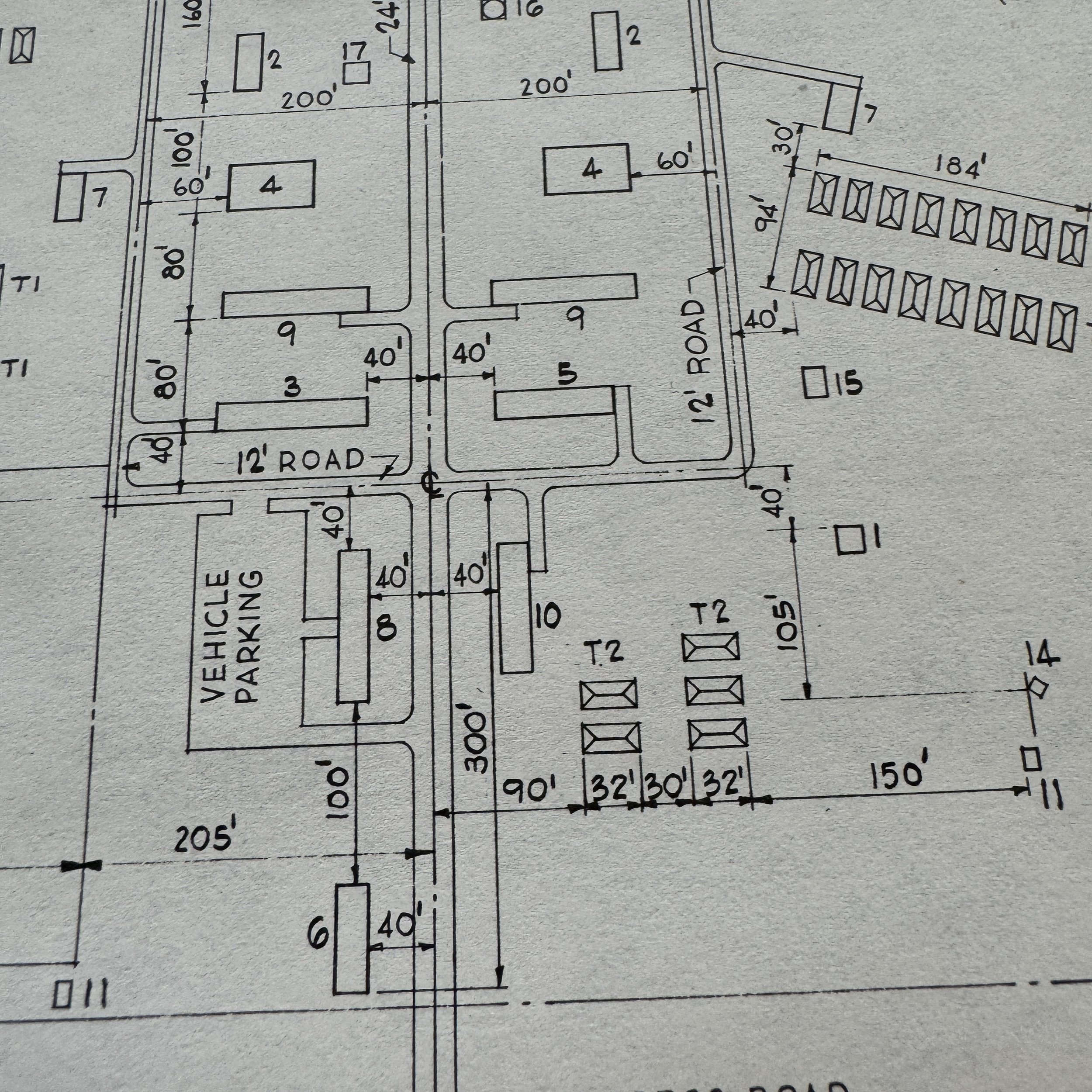
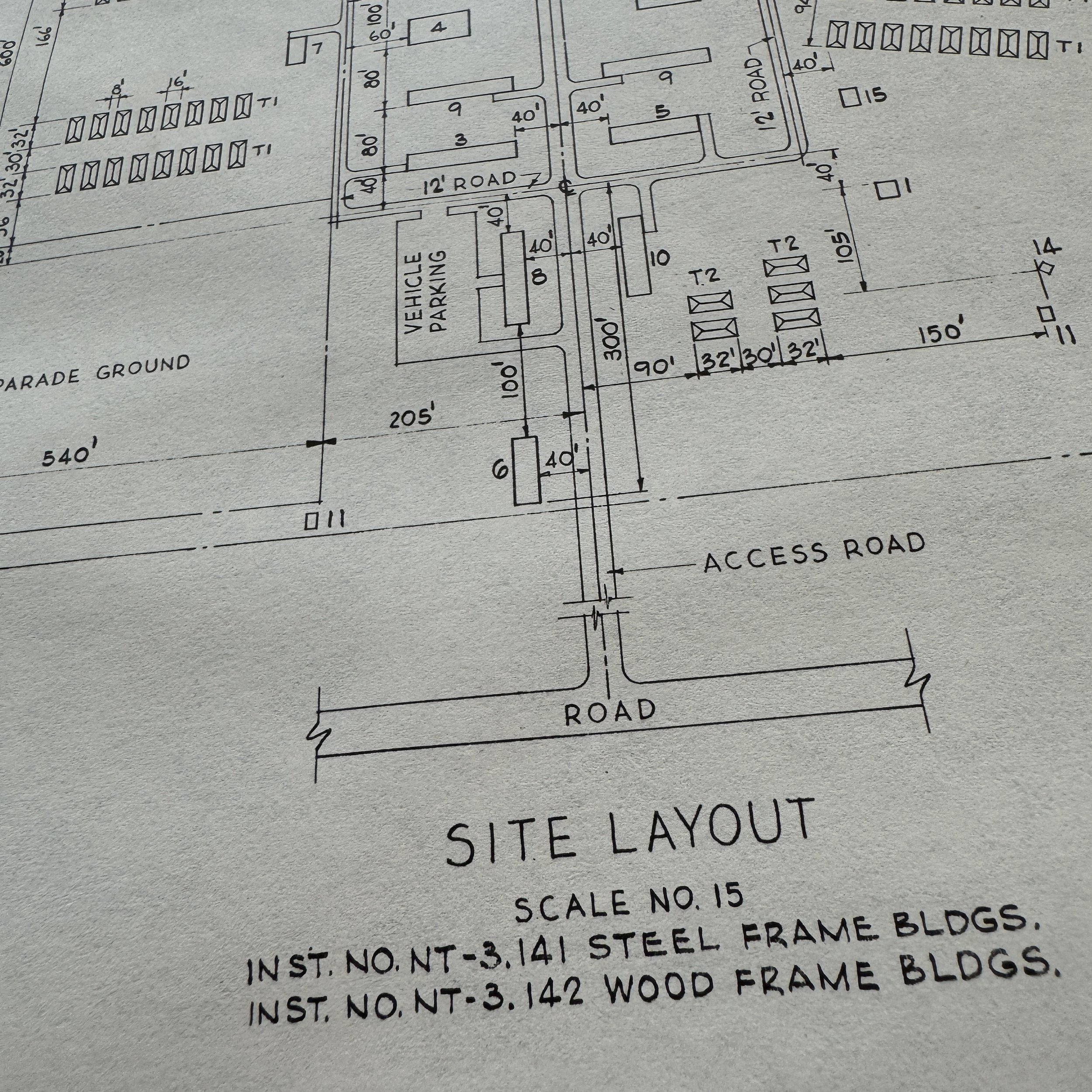
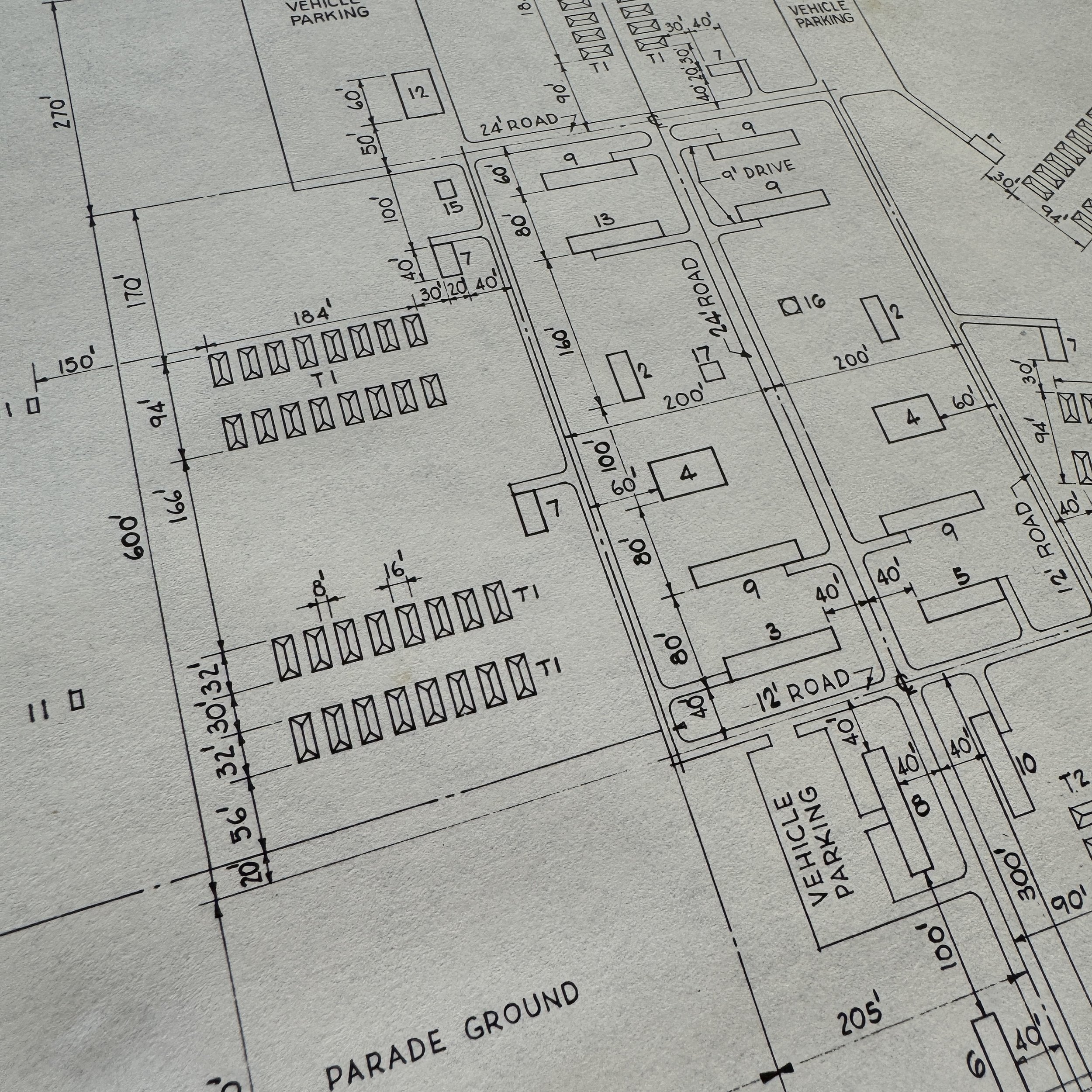

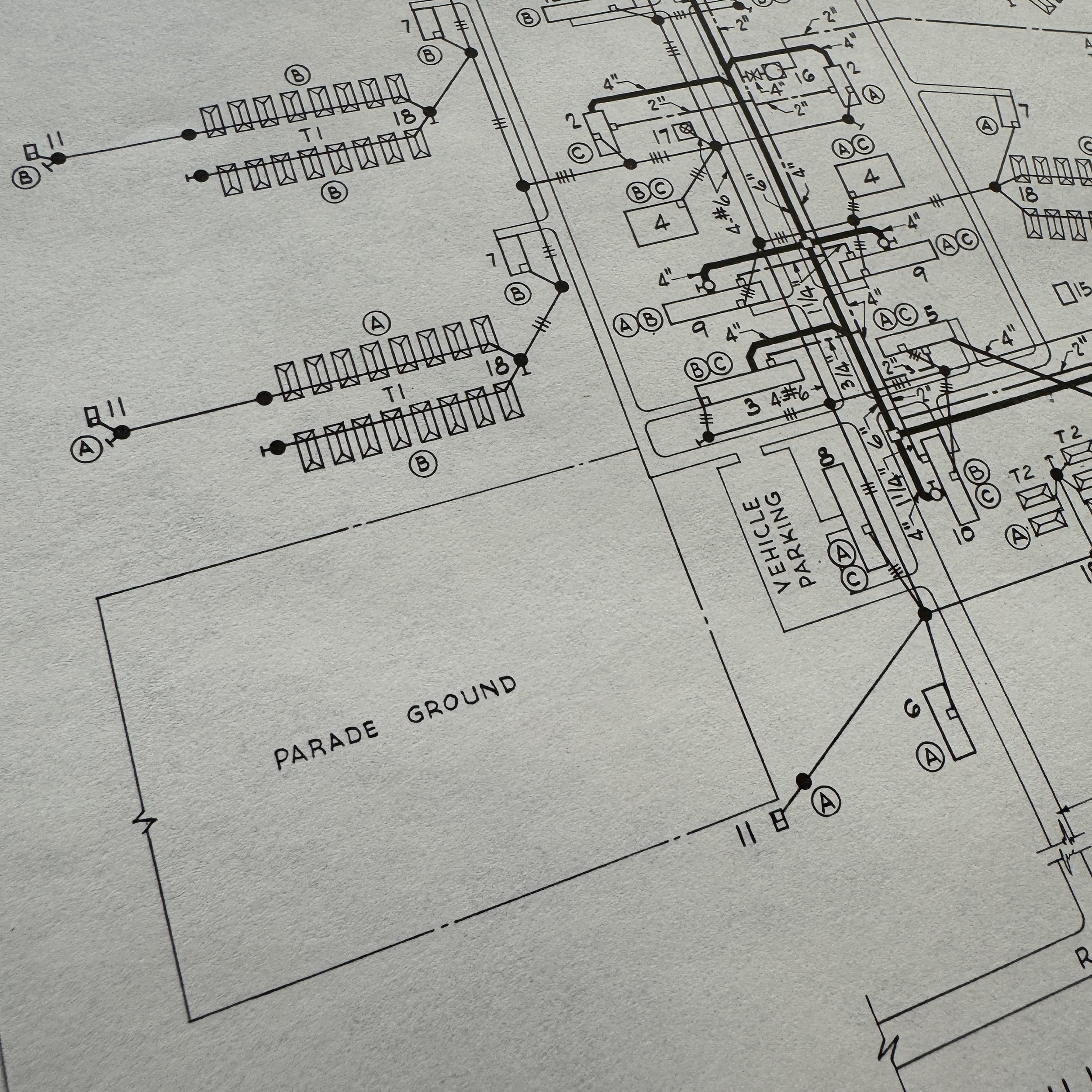








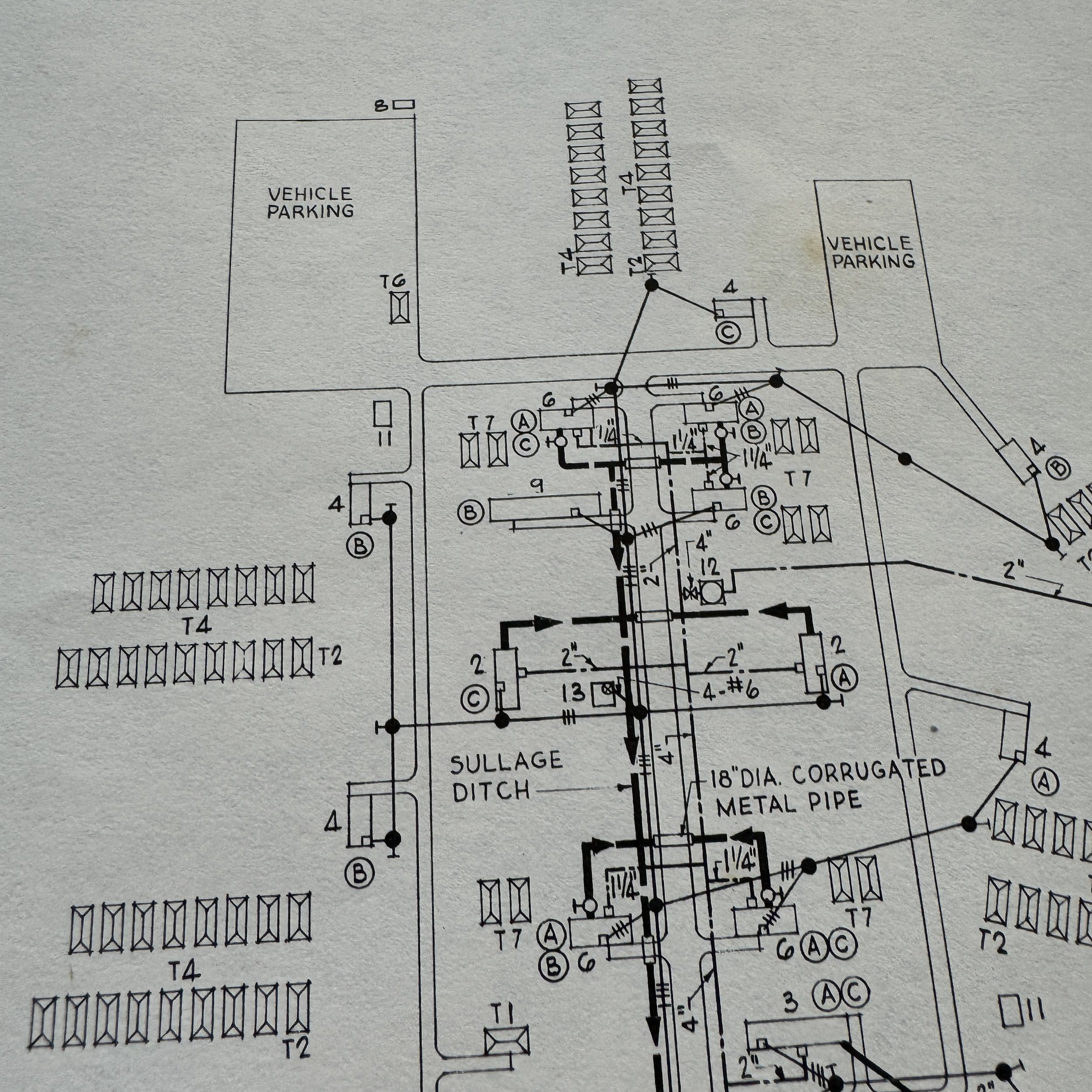





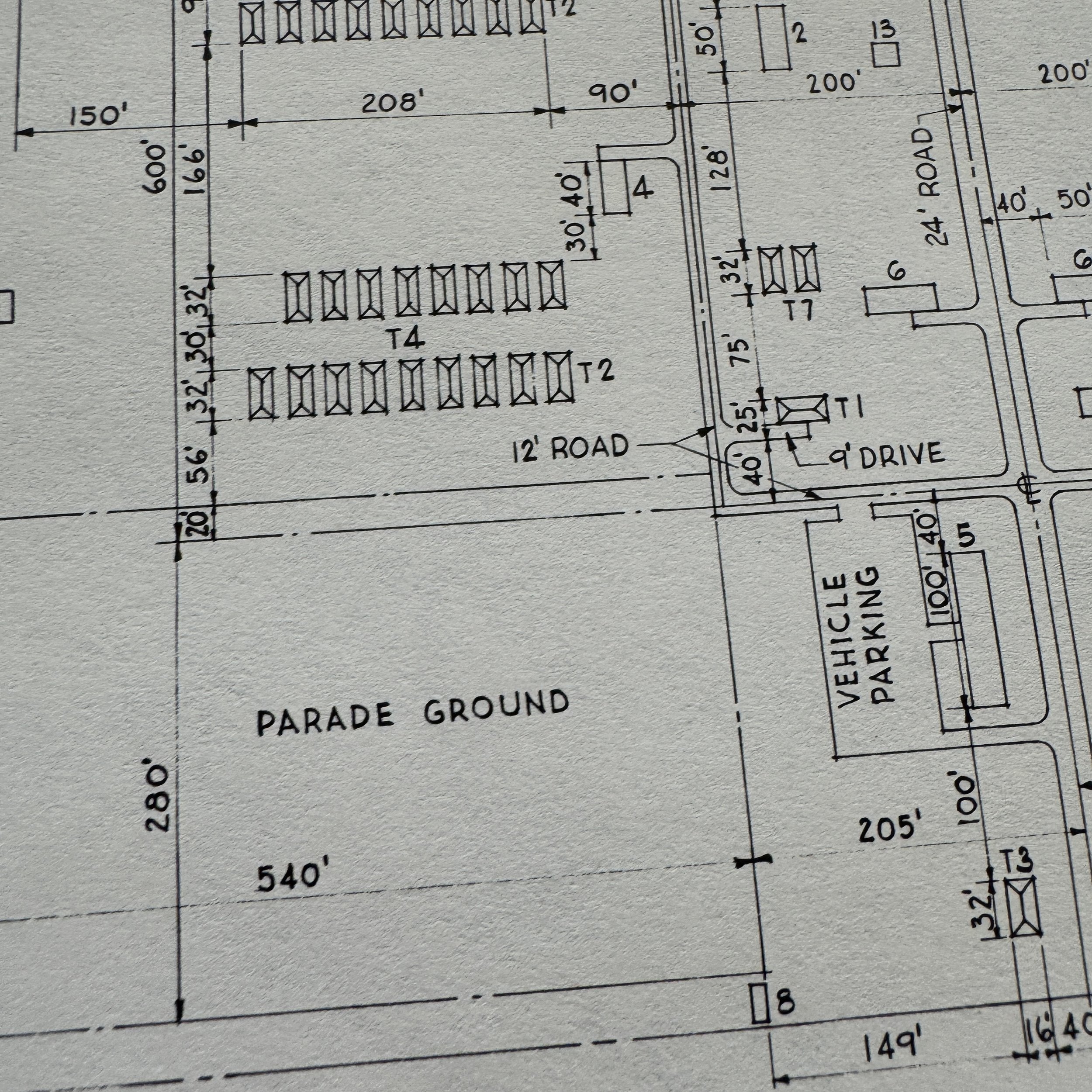
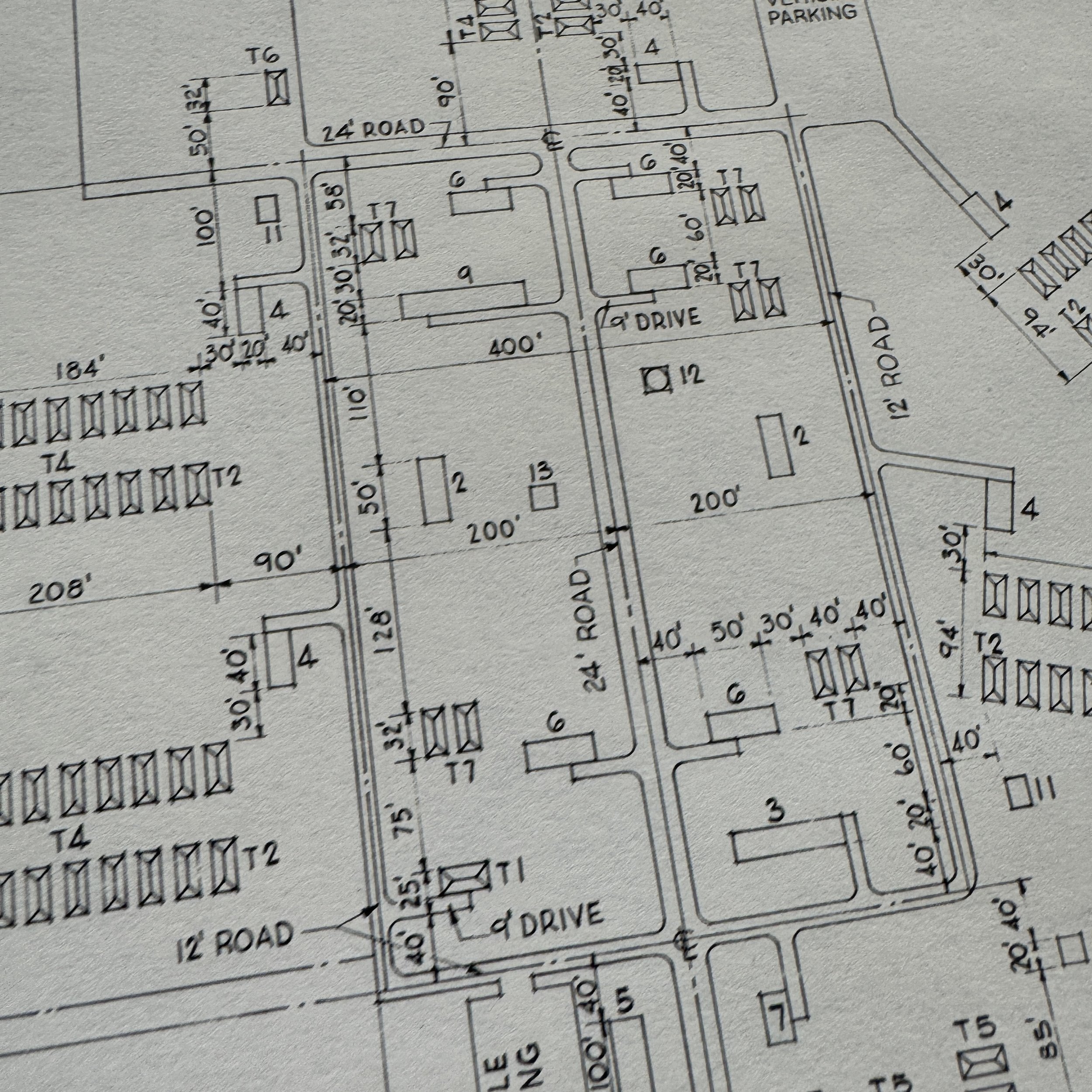
VERY RARE! 1969 Vietnam War U.S. Army Corps of Engineers - Military Construction Division "TROOP BASE CAMP" Theater of Operations Blueprint #2 (Double-Sided)
Comes with a hand-signed C.O.A.
Size: 14 x 20 inches
This extremely rare and museum-grade Vietnam War artifact is an original 1969 dated U.S. Army Corps of Engineers - Military Construction Division "TROOP CAMP" theater of operations blueprint (double-sided).
Printed by the HEADQUARTERS DEPARTMENT OF THE U.S. ARMY (WASHINGTON D.C.) this is a rare Vietnam War theater used bring-back blueprint brought back by a Vietnam War U.S. Army Corps of Engineers - Military Construction Division veteran. This original theater blueprint, preserved in remarkable condition, provides more than a technical outline; it tells a broader story about the Vietnam War infrastructure, the complexities of battlefield camps, and the immense coordination required by military engineers. The troop camps built from plans from this blueprint played an indispensable role in housing thousands of U.S. soldiers on the front lines in Vietnam.
Dated 1969, this U.S. Army Corps of Engineers theater of operations blueprint was drawn in 1968 and printed and distributed to U.S. Army Corps of Engineers in frontline of Vietnam in 1969 where it was used during the peak of the war when more than 500,000 U.S. troops were stationed in Vietnam. Supporting such a massive military force in a foreign country required the construction of extensive infrastructure: airfields, field hospitals, barracks, POW camps, and supply depots, all of which were essential to the war effort.
The U.S. Army Corps of Engineers Military Construction Division played a pivotal role in the Vietnam War, not only through combat support but also by establishing the infrastructure necessary for U.S. military operations. As the war escalated, the need for secure and well-equipped troop camps became increasingly urgent. The Corps of Engineers was tasked with designing, constructing, and maintaining various facilities that provided essential living and operational quarters for American troops. These facilities included guardhouses, officer houses, mess stations, barracks, headquarters stations, and other critical components of a functioning military base. The construction of troop camps by the Corps in Vietnam highlighted the complexities and challenges of wartime engineering, as well as the indispensable role of logistics and infrastructure in military operations.
Challenges of Construction in Vietnam
The construction of troop camps during the Vietnam War presented a set of unique challenges for the U.S. Army Corps of Engineers. The tropical climate, with its intense heat, heavy monsoon rains, and high humidity, made construction difficult and posed risks to equipment and personnel. The landscape itself varied from dense jungles and swampy lowlands to rugged mountains, which made selecting and preparing sites for troop camps particularly challenging. The presence of Viet Cong forces also complicated construction efforts, as workers were often at risk from guerrilla attacks, sabotage, and landmines.
To address these challenges, the Corps of Engineers had to adapt conventional construction methods and innovate new techniques that could withstand the local conditions. This included using locally sourced materials, designing facilities to handle the tropical climate, and implementing security measures to protect construction crews from enemy threats. The Corps' ability to overcome these obstacles was a testament to its expertise in military engineering and its commitment to supporting U.S. troops in Vietnam.
Components of a Typical Troop Camp
A typical troop camp in Vietnam constructed by the Corps of Engineers included several key components, each serving a specific purpose in sustaining military operations and troop morale. These components were often built with prefabricated materials to facilitate rapid assembly and disassembly, which was crucial in a combat zone where mobility was sometimes necessary.
Guardhouses were among the most vital structures in any troop camp, serving as security checkpoints to monitor and control access to the base. These guardhouses were typically positioned at camp entrances and around the perimeter, ensuring the protection of personnel and assets within the camp. Guardhouses were often fortified with sandbags and barbed wire to offer protection against small arms fire and shrapnel.
Officer houses, or billets, were constructed to provide adequate living quarters for commissioned officers stationed at the camp. These accommodations were generally of higher quality than the standard barracks and often included private rooms and basic amenities. The officer houses were essential for maintaining the organizational structure of the camp, as officers played a key role in overseeing operations and maintaining order.
The mess stations were another important component of the troop camp. Designed as dining facilities, mess stations provided troops with prepared meals, which were crucial for maintaining morale and energy levels in the challenging environment. The Corps of Engineers constructed mess stations that could accommodate large numbers of troops, including kitchen facilities capable of preparing meals on a large scale. These facilities often included dining areas with tables and benches, as well as kitchen areas outfitted with cooking equipment and food storage capabilities.
Barracks were the primary living quarters for enlisted personnel. The Corps of Engineers designed these structures to house troops in relatively close quarters, with bunk beds or cots lined up in rows. While the barracks were not luxurious, they were constructed to provide basic shelter from the elements and protection against enemy attacks. The barracks were typically made from lightweight, prefabricated materials to facilitate rapid construction and relocation if necessary.
Headquarters stations served as the administrative and operational centers of the troop camps. These buildings housed command and control elements responsible for coordinating military operations, communications, and logistics. The Corps of Engineers often constructed headquarters stations with reinforced materials to ensure that key personnel and equipment were protected from potential enemy fire. Additionally, these stations were outfitted with communications equipment to enable coordination with higher command levels and other units in the field.
Other essential components of troop camps included medical facilities, maintenance workshops, ammunition depots, and motor pools for vehicle storage and repair. The construction of these facilities was necessary to support the overall operational effectiveness of the camp, ensuring that troops had access to medical care, equipment maintenance, and logistical support.
Engineering Techniques and Innovations
The Corps of Engineers employed several engineering techniques and innovations to meet the demands of troop camp construction in Vietnam. One such technique was the use of prefabricated structures, which could be rapidly assembled on-site. Prefabrication minimized construction time and labor requirements, making it an ideal solution in a combat zone where speed was essential. The Corps also developed modular designs that could be adapted to different terrains and operational needs, allowing for flexibility in the layout of troop camps.
The construction of defensive structures was also a priority. The Corps incorporated defensive elements such as bunkers, sandbagged fortifications, and barbed wire barriers into the layout of troop camps. In some cases, camps were surrounded by perimeter walls or trenches to provide additional protection against ground attacks. The engineering of these defensive measures had to account for the likelihood of artillery and mortar fire, as well as the threat of infiltration by Viet Cong forces.
The use of airfields and helicopter landing zones within troop camps facilitated rapid troop deployment, medical evacuation, and supply delivery. The Corps of Engineers constructed airstrips and landing pads to accommodate a range of aircraft, including fixed-wing planes and helicopters, which played a crucial role in the war's air mobility strategy. These facilities were built with materials that could withstand the heavy use and wear typical of military operations in a tropical environment.
Impact on the War Effort
The construction of troop camps by the U.S. Army Corps of Engineers was instrumental in sustaining the American military effort in Vietnam. The availability of secure and well-equipped facilities allowed for more effective command and control, provided troops with a semblance of comfort in a hostile environment, and ensured the logistical support necessary for combat operations. The Corps' engineering accomplishments contributed to the war's overall strategy, enabling U.S. forces to establish a presence in remote and contested areas.
Despite the challenges posed by the environment, combat conditions, and logistical constraints, the Corps of Engineers successfully built an extensive network of troop camps that served as operational hubs throughout the Vietnam War. The infrastructure they provided facilitated the deployment and support of U.S. and allied forces, demonstrating the critical role of military engineering in modern warfare.
The U.S. Army Corps of Engineers Military Construction Division's efforts in building troop camps during the Vietnam War exemplified the complexity and importance of military engineering in a combat zone. Through the construction of guardhouses, officer houses, mess stations, barracks, headquarters, and other essential facilities, the Corps provided the infrastructure necessary to support American military operations in a challenging and hostile environment. Their ability to innovate and adapt to the unique conditions of Vietnam was crucial in establishing a logistical foundation for the war effort, showcasing the vital role that engineering plays in military success.